
 |
|
|
#1 |
|
All the news that's fit to excerpt
Name: newsie
Location: who knows?
Join Date: Jun 2008 Motorcycle(s): only digital replicas Posts: Too much.
|
[motorcycle.com] - MO Interview: MIPS CEO, Max Strandwitz
Little yellow dots emblazoned on the back of helmets have become more and more prevalent in the past few years. That dot, of course, means the helmet is equipped with a slip layer known as the Multi-directional Impact Protection System, or MIPS, as the brand is known. MIPS has more than doubled the number of brands it worked with just three years earlier, now partnering with 143 brands that span industries from motorsports and cycling, to snow sports and even construction. In motorsports, MIPS works with the following brands:
Everything You Wanted To Know About MIPS 509 Alpinestars Answer Arctiva AVA Bell BMW Fox Icon Just1 Kabuto Klim KTM KYT LS2 Moose Racing MSR OíNeal Scott Thor Z1R 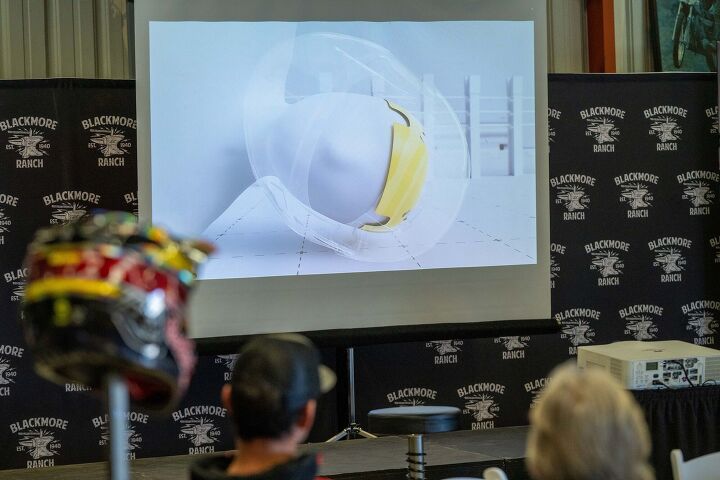 Here MIPS explains how its yellow low-friction layer works, allowing 10-15 mm of omnidirectional slip thatís said to help manage rotational energy. Here MIPS explains how its yellow low-friction layer works, allowing 10-15 mm of omnidirectional slip thatís said to help manage rotational energy.During my time at MO, Iíve had the opportunity to use helmets with five different approaches to managing rotational energy. MIPS however, seems to be growing in popularity at an exponential rate in comparison to these other approaches. In hopes of learning why that was and what else the Swedish company has been up to in the past few years, I had the opportunity to sit down with Max Strandwitz, CEO of MIPS AB, for a quick interview after a MIPS Safety Symposium here in Southern California. 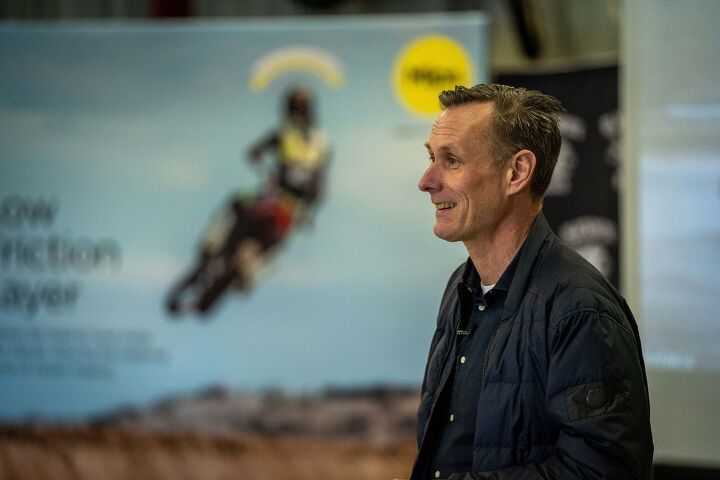 MIPS CEO, Max Strandwitz presenting to the crowd at Blackmore Ranch in Murrieta, CA. MIPS CEO, Max Strandwitz presenting to the crowd at Blackmore Ranch in Murrieta, CA.MO: So, whatís new with MIPS? Max Strandwitz: There were a couple of things that we talked about at the Safety Symposium today. Due to COVID, we havenít been able to do a safety symposium in about three years. So, of course, a lot of things have happened during that time. We have developed a lot of new technology that weíre now bringing to the market. We have not been sitting idle. Today, we have about twelve different technologies that we are using in our clientís helmets, all of them addressing the same thing. Not that we differentiate in terms of performance, but the implementation is different. Today, we discussed the different price points that MIPS can fit for our clients. Starting with what we call essential. There, you get the basics. So, with this, typically you see an additional price increase around twenty US dollars. Then of course, you have the more integrated solutions where you go up a little bit in price point, the better job it will do and, in some products, actually become less visible in the helmet. We have a new padding solution called Integra TX where you have actually the sibling technology integrated directly into the padding. Fox just released two new helmets incorporating the Integra Split solution where you have dual densities. With Integra Split you have a softer density closer to the head and then a harder density further away from the head. You then redirect motion through a split construction that moves independently from one another. I think that was a big surprise for people when they saw how many different technologies we actually have. Thatís why and how we can actually create unique safety stories with so many different brands Ė piggy-backing a lot on a brandís safety story, how they want to integrate MIPS, and eventually, creating a great story together.* Today, we also talked about how successful we have been in motocross. There are 36 supercross and pro-am riders now with MIPS technology. I think we had 173 combined podium finishes across each discipline during the 2022 season and a winning percentage of 72% for riders equipped with the MIPS system. In motocross, it really starts working. People are getting it.* 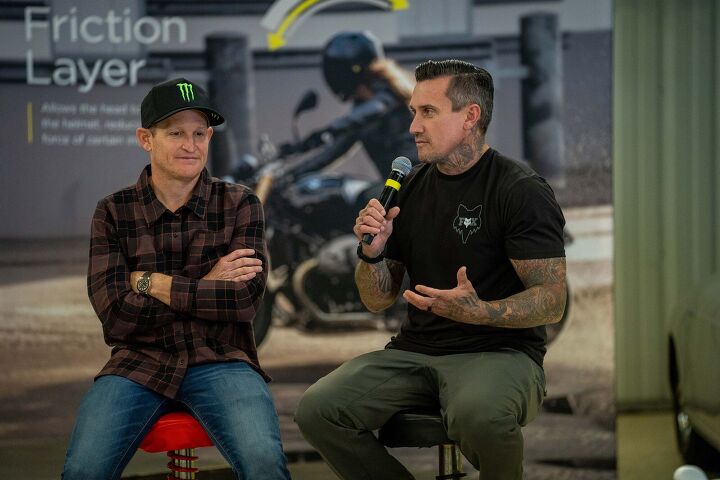 There were more than a few familiar faces at the Symposium working as brand ambassadors for MIPS. These guys have dealt with a few hard knocks on their way to GOAT-hood. There were more than a few familiar faces at the Symposium working as brand ambassadors for MIPS. These guys have dealt with a few hard knocks on their way to GOAT-hood.Then if you look at the other side of it, the on-road side, we donít see the same traction. There has been a much slower acceptance of MIPS. We have done a lot of market research. For instance, in Europe, an average rider is 47 years old. Theyíve been riding for twenty years and have never had an accident because theyíre so good at riding their bike. Even if the person would be exposed to danger, they will probably manage because theyíre so confident how to manage the motorcycle. Thatís the person we need to convince. Many times, they might not want to wear a helmet at all.* Now of course, we are helped by some regulatory changes. So in Europe, there is a new testing standard which is called ECE 2206, where they aim to improve the linear performance, not what MIPS does, but the normal performance of the helmet, and will work to filter out the worst performing ones. In time, it seems all standards will be folding in rotational motion into the standard test certification, which is, of course, helping us. This standard was implemented about one and a half, two years ago, and now from the first of January in Europe, you are actually not allowed to produce helmets that donít pass the new standard. So, that, of course, helps a lot. And then another eighteen months from now, you will see that helmets are not even allowed to be sold in a store that donít pass the new standard. Normally, they put the thresholds quite low, and then over time, they increase it, maybe every two years. So, for now, you can still pass the standard without any rotational motion protection. I think thatís good because it allows the industry to change gradually.* Of course for us, we see a lot of traction in that area, but also for us, when we go into a category or a type of helmet, we want to be able to answer all the questions because of course we are scientists. So today, we also presented a thesis where we look at high speed motorcycle accidents. Because a lot of the tests that people are doing in the laboratory, including a lot of the standards, use more of the rolling motion. You actually hit an angle then you bounce off the stem, and then you measure the kind of force that the helmet is challenged against. But of course if you are a MotoGP rider, Valentino Rossi, you ride with an average of 150 miles per hour, you want to see that the technology makes a difference also in those accidents. So, we explained a little bit on what we have done in terms of validating the technology also for those. 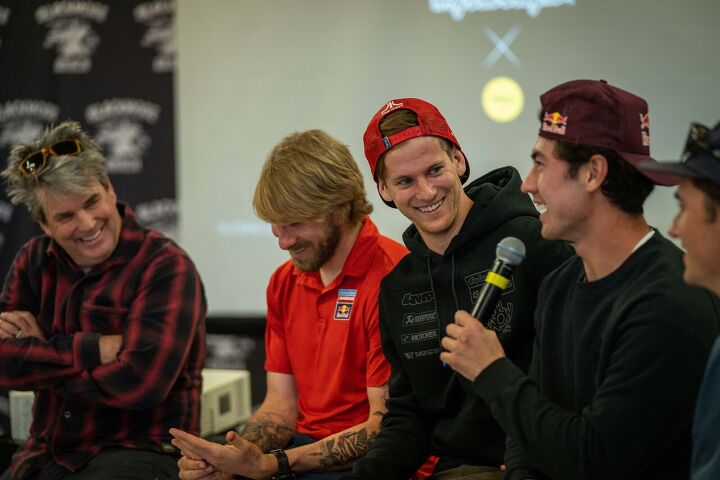 Current and past moto legends were in attendance at the symposium. Left to right: GASGAS Factory team owner Troy Lee, with racers Justin Barcia, Michael Mosiman, and Pierce Brown. Current and past moto legends were in attendance at the symposium. Left to right: GASGAS Factory team owner Troy Lee, with racers Justin Barcia, Michael Mosiman, and Pierce Brown.There was a scientific paper published about a year ago in this subject – we can of course send that forward – where you see how we validate it in that area. Science is really, really important for us. We also walked through an accident reconstruction of a motocross accident where there was a guy that was leading the race who was then hit by the rider in last place after a whiskey throttle accident. He then looped out the bike and hit the other rider in the head with the fender of the motorcycle. Unfortunately, the rider ended up in a coma. Luckily, we had two cameras on the set so we could really see the different impacts from the angles and were able to reconstruct the whole accident, which was of course great. Not great that it happened of course, because the best accidents are the ones that donít happen, but if it happens and we can learn from this, we can make sure that we progress, and the whole industry progresses.* MO: Why is MIPS more prominent in dirt helmets than street? MS: I think that the perception of safety is very different in motocross. If you talk to a motocross rider, itís not a matter of if heís going to crash, itís just a matter of when. Heís quite keen on wearing protection. He almost looks like Robocop when heís going out racing; elbow pads, knee pads, shoulder pads, and a good helmet. You see that all the time. 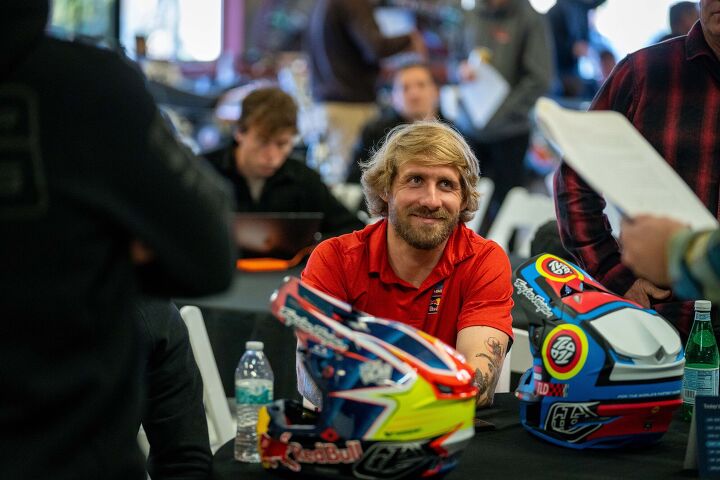 Troy Lee Designs GASGAS Factory racer, Justin Barcia posted up at the Troy Lee Designs table. Troy Lee Designs GASGAS Factory racer, Justin Barcia posted up at the Troy Lee Designs table.When it comes to the whole industry and specifically to street, I still believe that motorcycle manufacturers donít want to educate riders as to how important safety is. If you know how dangerous it is to ride in a motorcycle at 200 mph, some significant others probably wonít allow you to go out and do it. This is, of course, an important thing. If you go to, for instance, the worldís largest motorcycle fair, which is EICMA, and you go through all the motorbike manufacturers and so on, you donít see them talking a lot about safety. Itís girls sitting in bikinis or short dresses, lots of flames, everything should be black and so on. I think the industry has a job to do. Again, what I talked about before, the whole new standard that is coming into play is at least having an effect. So, it starts to change, and you start to see a lot of positive signs in the industry. And we also start to see in emerging markets, for instance, that first of all, theyíre starting to mandate helmets. But theyíre also starting to mandate better helmets. In China, they implemented a new helmet law a couple of years ago. They didnít say which helmet though, only Ďwear a helmetí. Then all of sudden we are seeing people on their e-scooters riding with a hockey helmet on their head, or an equestrian helmet. Theyíve now regulated that. I think the whole world is becoming a safer place. Even though itís probably not the right word with war and everything that we see around us today, but at least in terms of motorcycle. MO: Considering the trend of increasingly angular designs in motocross helmets, Fox and Alpinestars as two examples, does this make mitigating rotational energy more difficult? Obviously, the MIPS system is there to assist in this regard, but would a smoother helmet design help? MS: What we normally watch out for is when a helmet has a lot of things on the outer surface. We have the same issue with road bike helmets. In bicycle, for instance, when you have edgy, highly ventilated helmets, we sometimes say to them, we are not going to do it because this is not elevating the safety. You are letting design aspects take the better of the helmet, and thatís not the right thing to do. Also, if a helmet has too many things on the outer surface or is too edgy, you run the risk of catching on things like branches off-road, and that can be extremely dangerous. Most brands are very receptive to this discussion, though. Of course, we always evaluate them; we always test them. Sometimes, we have to say no because itís actually making the helmet worse, and safety should always be the top priority. I would say that Fox is the perfect ambassador for us. We have a great collaboration. Really good discussions. And we have discussions about what we can and cannot do. They have a little bit more boxy design on their helmet, but it doesnít mean that it is counter productive when it comes to safety. 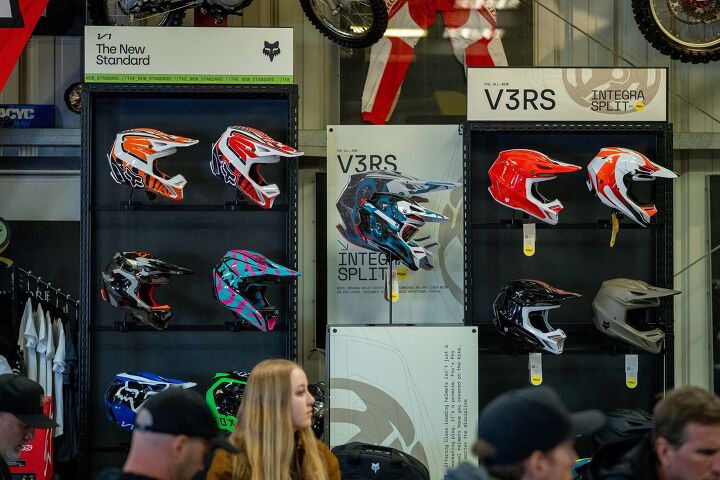 Fox used the symposium to announce its new V3RS helmet equipped with MIPS Integra Split technology which works by splitting the energy-absorbing layer and then molding the Low Friction Layer between the moving layers. Fox used the symposium to announce its new V3RS helmet equipped with MIPS Integra Split technology which works by splitting the energy-absorbing layer and then molding the Low Friction Layer between the moving layers.MO: Does MIPS work if the helmet isnít 100% secure? There have been reports and findings from folks like the Snell Memorial Foundation that suggest considerable differences in performance between differently prepared testing head forms. These suggest a head form with silicon applied to the top benefits more greatly from technology like MIPS versus a head form with hair applied to it which saw little to no benefit in these tests.* MS: I mean, itís always best to have a helmet that fits your head. So, if I could choose, of course, this is preferred. Also, a lot of people say that the chin strap is important. Itís important to have exactly the right fit of the helmet. When the accident happens, as long as the helmet sits correctly on the head when it happens. Because you can actually, if youíre lucky, hit with an angle, you push the helmet on the head, and you get an opportunity for the technology to work properly. It doesnít mean that it will perform worse, as long as you have the helmet on. The point pressure when you have an accident is somewhere around 750 to 1000 kilo. So, that pressure doesnít force the helmet to be perfect on the head, as long as youíre hitting the right place. So even if it does change it a little bit, it still doesnít matter because the technology still does the same job. Given that we never know what kind of accident a rider is going to have, we have technology that works omnidirectionally. So, it should work in all directions at all the different impacts. And thatís really important for us because we cannot have a technology that if you fall, you have to make sure to fall in this direction. You never know.* MO: It seems rare to see MIPS in many brandís flagship helmets. Do you find brands are interested in MIPS for lower or mid-tier helmets to increase their value proposition with customers?* MS: I think thereís a combination of different answers. I mean, the pinnacle helmet is usually the MotoGP helmets and so on. There it has actually been quite difficult to get the proper discussion with the brand. Normally, they donít sell a lot of units with those products, and they want to restrict a lot of the helmet development because the helmet might need to be recertified, which is an expensive and time-consuming process. We have now developed an FIM homologated helmet with Kabuto for use in MotoGP. This will be the first helmet with MIPS to be used at the pinnacle of motorbike racing. That of course is a very strong start. There will be more that are asking for the same, and we plan to launch others later in the year. So, you will see more MotoGP helmets equipped with MIPS. When they bring in a new MotoGP helmet, it can easily stay on the market for six to eight years, which means that the cycle is not coming that often. When a brand introduces a new helmet, normally, they are more receptive to technology. This is changing though. You will see more MotoGP helmets being launched. Also, the riders are starting to put demand on the brands saying that, ĎHey, this is my job. Why do you not focus on my safety? What am I to you?í And I think thatís the right kind of challenge. 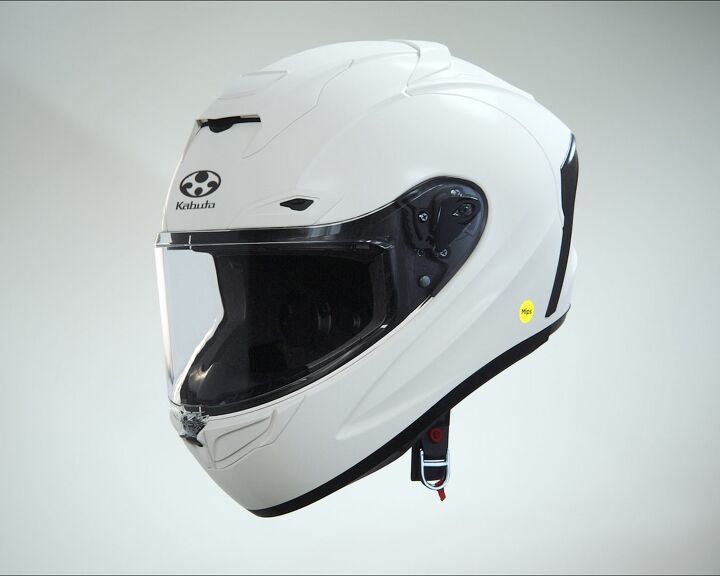 The Kabuto F-17 Racing will be the first FIM homologated helmet with MIPS to be used in MotoGP. Strandwitz says we should expect to see more in the coming year. The Kabuto F-17 Racing will be the first FIM homologated helmet with MIPS to be used in MotoGP. Strandwitz says we should expect to see more in the coming year.MO: Speaking of the Kabuto F-17 Racing with MIPS and the FIM homologation, why is it that Kabuto, and perhaps Arai, are the only helmet manufacturers out of more than 20 brands to pass FIM testing that are having a conversation about managing rotational energy specifically?* MS: The funny thing is that we are only in the beginning of the homologation process. Right now, the thresholds for testing are really low. If you look at the linear performance of the helmet, that is already stressing a lot of the brands because in these tests they are pushing quite hard. In terms of rotation, the thresholds are extremely low. You can pass it without any technology. In the next testing standard upgrade, which will be quite soon, it will be tougher, and then, another one will follow. It doesnít mean that it has to be MIPS, but youíll probably need to have some kind of technology. Also when we talk to these Japanese manufacturers, you ask them, why are you not addressing this? ĎAh, we donít need it because we have Japanese engineers. They are the best in the world, and they know everything we need to do.í Okay, so you are brain experts? ĎYes, if we need to be, we are.í Okay. Shoei has its own EPS pack that they have launched. We asked them, ĎCanít you come to the office? We test together, we learn together. You can share what you have done and so on.í And so far they have not come. Also, when you have people who say that a hard surface is enough, but you donít know what is going to happen in an accident. If you hit ice with a hard surface, yeah, itís probably going to work quite well, but you donít know what type of surface youíre going to hit. Also, when you make the outer shell too hard, you need to soften other things inside the helmet. Which means that the density doesnít always need to be hard, or needs to be softer, which is easier to get stuck on. So, you can actually be counterproductive. When I have talked about that with Arai, I have never gotten any answers on how theyíve actually validated what they say. I know you have probably 2,000 years of experience and performance. But we talk science, we talk data. Letís learn from each other. MO: What are the downsides and counterarguments to MIPS? Or rather, how do you counter the counter arguments?* MS: We actually donít. We have done about 60,000 more tests than anyone. We have the biggest test lab. We have the most engineers. If we all of a sudden start showing what we have done at home, of course, we would only want to show perfect tests in perfect scenarios because who would produce a test to show the public weíre not performing well? I think that will mislead consumers because then in the end they will trust no one. Thatís why we never publish our own testing. We always rely on third party testing, independent testing that insurance companies have done because we believe that independent testing is the best. This way, you cannot only put your best helmet or your best test out, like we would never do. Some others publish their own testing. I question that a lot. I think itís wrong for the industry because you can never say, Ďin this perfect condition, in this specific test we actually performed well.í Let someone else do it. Take Virginia Techís Helmet Lab, for instance. They have done a lot of tests on bicycle helmets. I think today out of the top 50, 45 of them use MIPS. I think thatís a great validation of the technology. When it comes to other technologies, we test everything that comes out on the market. If I see something that would be superior to MIPS, then of course I will probably try to buy it. At the moment, we are not buying any other technology. I think it would be great to have different technologies, but I need to be able to use it. Currently, almost, if not all technology that we see out there, wouldnít pass the MIPS approval test, so why would I buy it? Of course, I donít want to bad mouth other technologies because I think anyone that is pushing the industry forward should be rewarded for that. The market is big enough for more players. I love competition. Competition will always make us better and make sure that we constantly develop. Whatever doesnít develop, will die at one point.* 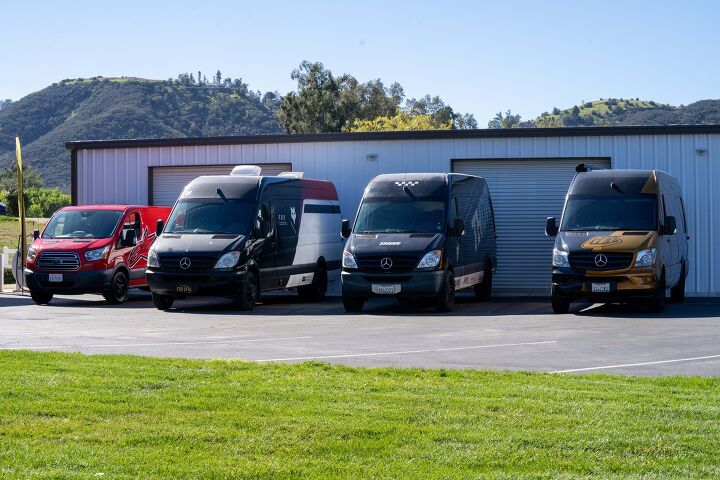 So, itís not that. Then when it comes to understanding rotational motion, I think thatís where most brands fall short. For instance, Fly, they used to be a MIPS customer, but the way they talked about comparing brands to each other and putting these claims on their website, thatís not how we do it at MIPS. We try to be very much like Popeye, the cartoon character. We are the biggest and the strongest one, but we also need to be nice to the industry and very inclusive, which allows everyone to succeed. Speaking poorly about another product to enhance your own is, I think, a bit childish, and thatís not what we are going to do. For us, it’s really sad that the industry has to go there. There are other ways to elevate your safety story. You never hear MIPS making any claims. We have done, like I said, 60,000 tests. If you speak to any of the other brands, if you actually find that they have done even one thousand tests, I would be surprised. So of course, for us, it is what it is. As long as they try as hard as they can to improve helmet safety, Iím a happy guy. Long answer, but honest. MO: The company has seen significant growth in the past few years in terms of the partners it works with. What would you attribute that to? MS: First, I think we are trusted by a lot of our partners. Itís very seldom that we lose a customer. Sometimes, we actually have to cut ties with customers that we donít feel can work within our ingredient brand world. During the session that we had today, I actually said that and that made me so happy. The four brands that were here today, Troy Lee, Fox, Alpinestars, and Thor, they are fierce competitors, but today, it was about elevating safety. Not one of them spoke negatively about each other. They actually complimented each other. Everyone talked about how we can bring the industry forward, and thatís exactly the way that it should work. When they go out on the market, okay, letís kill each other again. Thatís really important, but when you can leave prestige aside, I think thatís an important thing. We can get brands to do that, and I think that helps a lot. Today, when a brand comes to us, we always ask them, what is your safety story? Some of them say that, ĎI need MIPS because the market demands it.í I donít think thatís enough. You need to have your own safety story. You really need to understand what you are bringing to the market. That is super important for us to really make sure that everyone is making a commitment to safety when they are integrating MIPS. Of course, you will still have better and worse helmets, but as long as MIPS can help to make every helmet a little bit better, I think we have done a good job.* 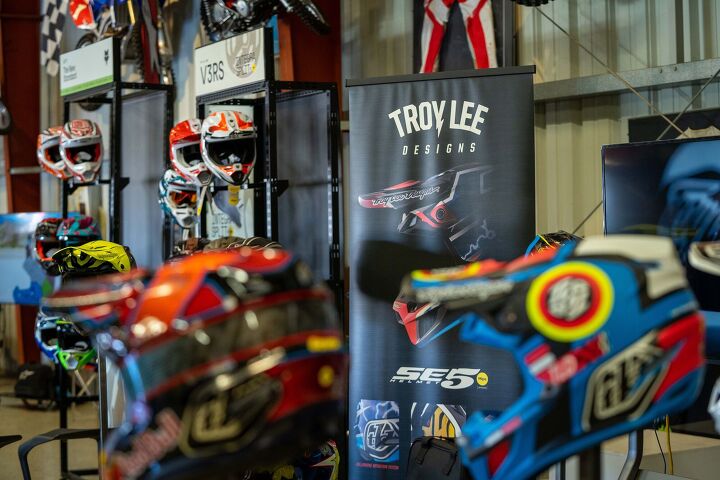 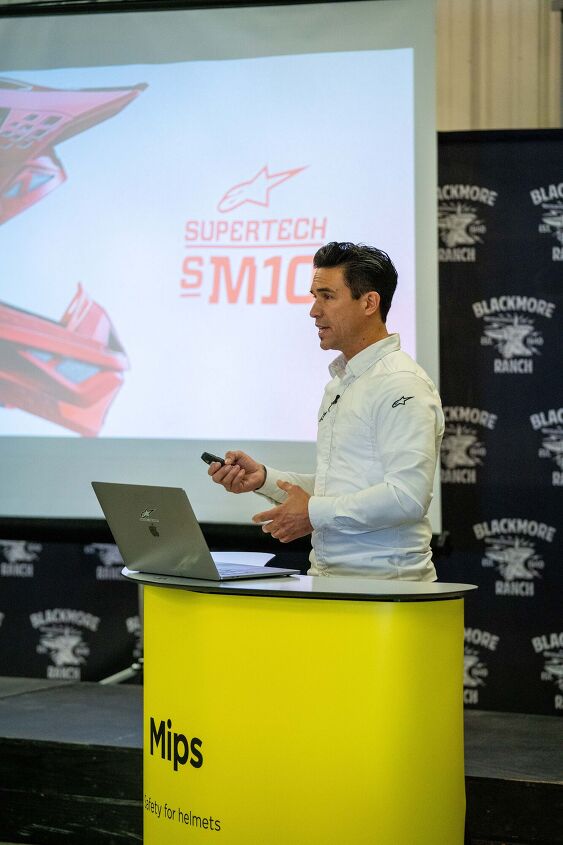 Then, we all want to educate. I think today, if you look at last year, we almost finalized one new helmet project per working day. So, thatís more than 200 helmets that will come out to the market during 2023. That is fantastic. If you talk to the brands that are competitors, if they do two helmets in a year, they are probably exhausted. Itís a very easy process for us to work with a brand. We take care of the whole implementation. They donít need to have resources on their side. They send us a drawing. We have developed a very much plug-and-play type of system because we do it all the time. We assign an engineer, and we want to make it possible and affordable for everyone to use MIPS, and that has been one of our success stories. As I mentioned before, I think it also helps that we are not judging anyone, not talking bad about anyone. Like I said, Popeye is a great example. You can be strong but you still need to be inclusive. I speak a lot to 6D and Bob Weaver. We meet at fairs and so on. There is no reason just because he is making a product that is different from mine that we can not talk and learn from each other. And I think thatís the way it should be. Then, we all want to educate. I think today, if you look at last year, we almost finalized one new helmet project per working day. So, thatís more than 200 helmets that will come out to the market during 2023. That is fantastic. If you talk to the brands that are competitors, if they do two helmets in a year, they are probably exhausted. Itís a very easy process for us to work with a brand. We take care of the whole implementation. They donít need to have resources on their side. They send us a drawing. We have developed a very much plug-and-play type of system because we do it all the time. We assign an engineer, and we want to make it possible and affordable for everyone to use MIPS, and that has been one of our success stories. As I mentioned before, I think it also helps that we are not judging anyone, not talking bad about anyone. Like I said, Popeye is a great example. You can be strong but you still need to be inclusive. I speak a lot to 6D and Bob Weaver. We meet at fairs and so on. There is no reason just because he is making a product that is different from mine that we can not talk and learn from each other. And I think thatís the way it should be.There is never one part of a success story that is really the Holy Grail. I think staying humble, and trying to be collaborative is important. There is no need for the process to be much different between a small brand and a big brand. We are trying to help everyone develop as good of helmets as possible, I think thatís off to a good start. MIPS has started to become a really well known brand. Awareness is increasing all over the place. We see that the consumers are prepared to pay for it, and we benefit from that. As mentioned, we have been growing in moto quite a lot. Last year was probably around close to 40% growth, and this year will likely be somewhere around 50% in moto. So, the traction that weíve gained here has continued to develop for us. MIPS has become one of the loudest voices in emerging technology hoping to manage rotational impact energy in helmets. When partnering with the biggest brands in whichever industry they might be involved in, it helps to validate the technology and increases brand awareness exponentially. While MIPS has adjusted its brand image and marketing to better resonate on the consumer level, third-party testing is moving at a slower rate. Standardization in actual test procedures and between safety standards in general, among other things, are still in their infancy. As this conversation continues and testing procedures become more developed and stringent, we Ė racers, riders, enthusiasts Ė benefit with the rising tide.* Become a Motorcycle.com insider. Get the latest motorcycle news first by subscribing to our newsletter here. The post MO Interview: MIPS CEO, Max Strandwitz appeared first on Motorcycle.com. Click here for full story...
__________________________________________________
I'm a bot. I don't need no stinkin' signature... |
|
|

|
 |
 Similar Threads
Similar Threads
|
||||
| Thread | Thread Starter | Forum | Replies | Last Post |
| [RideApart] - MIPS And Kabuto Join Forces With New F17 Racing MIPS Helmet | Ninjette Newsbot | Motorcycling News | 0 | November 29th, 2022 05:34 AM |
| [motorcycle.com] - MO Interview: Ducati CEO Claudio Domenicali | Ninjette Newsbot | Motorcycling News | 0 | February 18th, 2019 04:30 PM |
| [motorcycle.com] - MO Interview: Ducati CEO Claudio Domenicali on The V-4 and the Fut | Ninjette Newsbot | Motorcycling News | 0 | September 5th, 2017 09:10 PM |
| [motorcycle.com] - Ducati CEO Interview | Ninjette Newsbot | Motorcycling News | 0 | August 14th, 2015 10:40 AM |
| [motorcycle-usa.com] - Triumph N.A. CEO Greg Heichelbech Interview | Ninjette Newsbot | Motorcycling News | 0 | February 20th, 2014 06:40 PM |
| Thread Tools | |
|
|